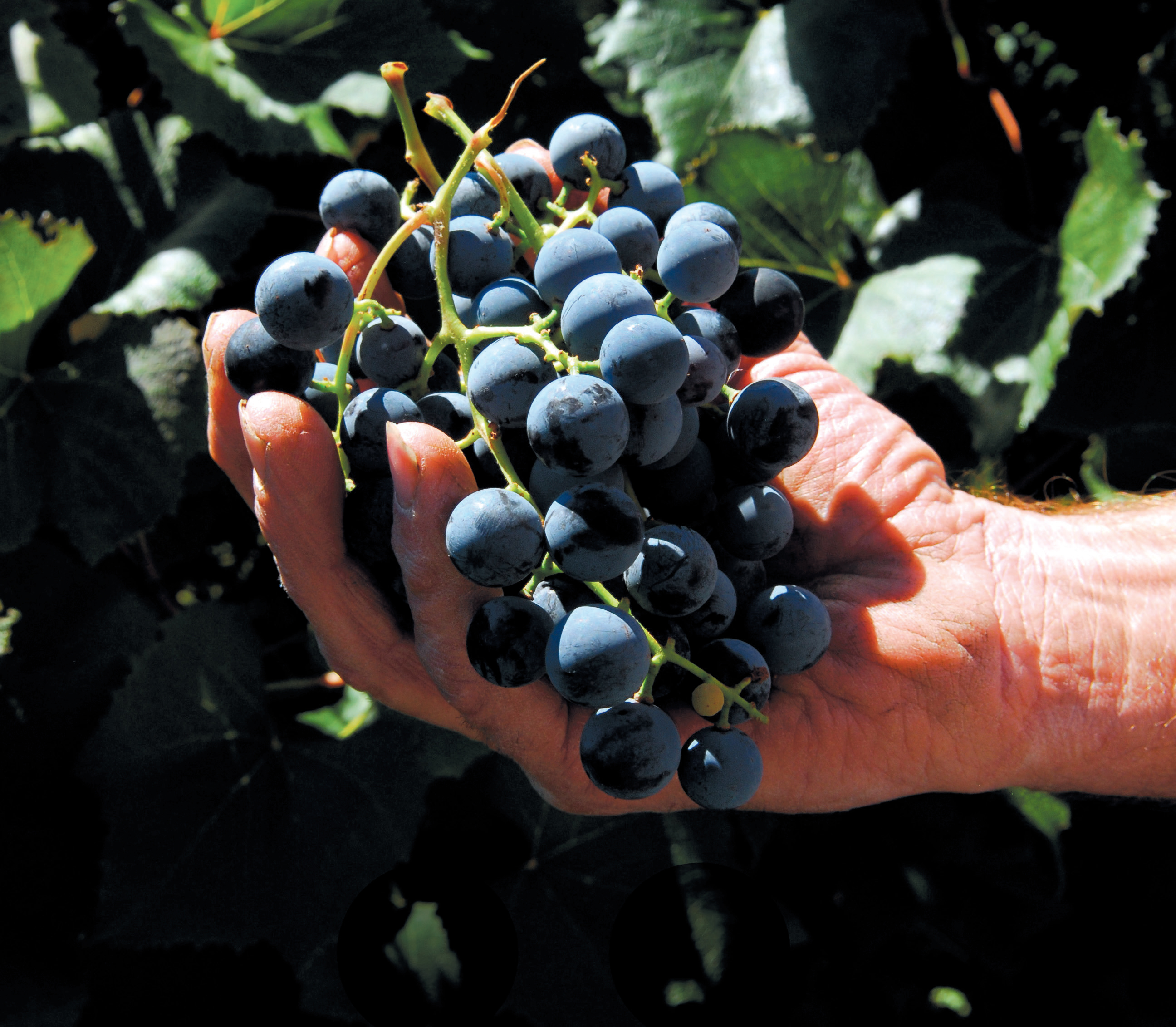Other Fruits of the Vine: Saba & Other Grape Wine Products
Thirteen years ago, my first harvest season in the Napa Valley, the smell of fermentation and decomposing pomace that hangs in Napa Valley’s autumn air was a little overwhelming. Now, I drink it in. It is ripe, rotten magic. It is part of a lifecycle that is older than human record, a simultaneous death and birth. Maybe not human-kind’s greatest achievement, but up the pole a few notches from the self-cleaning oven, to be sure.
We all know where the juice goes, and when one smells that heavy, heady smell, one gets a pretty clear picture of what happens to the solids that are left behind. The pomace, or solid grape matter left after the juice is drained from the presses, is everywhere, and by the truck-full it eventually goes back to the earth as fertilizer. In some countries it is used as animal fodder. Most wine-producing countries traditionally use some portion to produce pomace brandies (like grappa) and grape-seed oils. Now, harvest by harvest, local artisans and entrepreneurs in our area are expanding the list of non-wine wine grape products being produced in the Wine Country.
Clear, light grape-seed oils burst onto the American restaurant scene more than a decade ago, and quickly gained traction due to their fairly neutral flavor and very high smoke point, making them a Wine Country natural for pan-searing, frying and other high heat applications. Many of the first grape-seed oils we got our hands on were chemically extracted, negating the many health benefits for which grape seeds are valued. Now, we see a growing number of locally produced, varietally labeled, cold-pressed grape-seed oils. Some of these healthy oils are worthy of your olive oil money, and make interesting finishing oils, dressings, emulsified sauces and more.
More recent entries into the recycled grape lineup are grape-seed and grape-skin flours. Like grape-seed oils, some of these are varietal-specific, with a range of aromas, flavors and even colors. They are loaded with protein and anti- oxidants, and also are gluten free. Most manufacturers of grape-seed and grape-skin flours suggest adding them to baked goods in relatively small proportion to more traditional flours (typically in the range of 3% to 8%), which can still give the finished products distinctive color and flavor, without changing the texture significantly. These flours are now more than a curiosity, with large millers like Vermont’s King Arthur now producing grape-seed flour as part of a growing lineup of gluten free and other healthy flours. At Panevino, we’ve played with both grape-seed and grape-skin flours, and found that if you are willing to do a bit of experimentation, the results can be interesting and downright delicious.
Saba
My favorite “other” wine grape product is saba, a syrup made by cooking down grape must (stems, seeds, skins and unfermented juice) slowly over hours or even days. The resulting thick syrup is then aged in wood for a year or sometimes more. It is in no way new-fangled. We know that ancient Egyptians and Romans used it as a sweetener and condiment. Italians keep the tradition alive to this day. While saba is the Sardinian name, you’ll find it labeled vin cotto in Sicily and mosto d’uva cotto, a similar syrup, in the Emilia Romagna region. No coincidence that Emilia Romagna is the birthplace of Aceto Balsamico Tradizionale di Modena and di Reggio Emilia. While both saba and true balsamic vinegar share the same cooking process for the must, and, in some cases, extended ageing in wood barrels, saba is not vinegar, but rather a sweet grape syrup, with less pronounced acidity. Saba is used as a sauce for meats, vegetables and starches, as a sweetener in desserts, and a host of other things. A drizzle of saba on vanilla gelato, or drizzled over ripe figs, pears or strawberries, is reason enough to keep this tradition alive, but it is so versatile it won’t take you long to imagine all sorts of sweet and savory applications.
In our own kitchen, we use it as the base ingredient for glazed meat, fowl and fish, as a condiment for fine cheeses, to finish red wine reduction sauces, and don’t forget the gelato and fruit. We are not alone. I recently read an article calling saba the next “it” sauce. Ridiculous as that term might be, it might well also be true. The complexity of saba’s sweetness, the layers of flavor, are truly inspiring. The way I see it, if saba gets just one chef to stop dousing every dish indiscriminately with poor-quality balsamic vinegar and white truffle oil, it will have moved American cuisine forward by a light year.
In hot summer weather, I might simply drizzle saba over meat, fowl, fish or torpedo onions and radicchio off the grill. As the nights turn colder, I’m likely to glaze a roast, chop or bird with it. The recipe below is one of my favorite preparations for our local duck, and it’s just as heavenly with glove-boned quail. The mustard gives saba a savory bite, an acidity and piquancy that contrasts beautifully against the rich gaminess of medium-rare duck with crisp skin.






